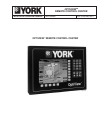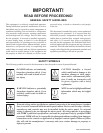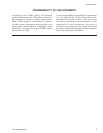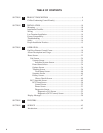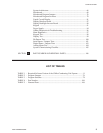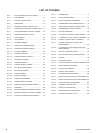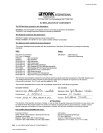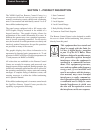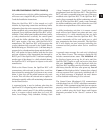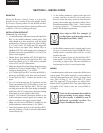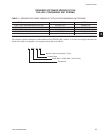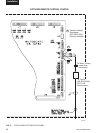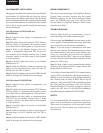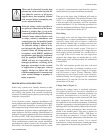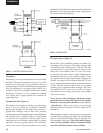
FORM 50.40-OM2
9YORK INTERNATIONAL
CHILLER/CONDENSING CONTROL PANEL(S)
All communication with the chiller/condensing units
will occur over a single RS-485 port. Reference Figure
2 and the Installation instructions.
When the OptiView RCC is first turned on it will
initialize by requesting current data and history buffer
information from the units connected. After the history
buffers are lled, only current data will be continuously
requested. Every eight hours the OptiView RCC will re-
initialize. If the control panel updates the history buffer
(a safety shutdown has occurred), the control panel
will send the chiller shutdown data to the OptiView
RCC upon receipt of the next valid OptiView RCC
transmission. The OptiView RCC will recognize that
a safety shutdown has occurred by the Update History
Buffer bit being set. If this bit is ever 1, the data dump is
assumed to be a shutdown data dump and the OptiView
RCC will update its history buffers with the new data
and start a printout of the transmitted data through its
RS232 port. If the OptiView RCC had been requesting
another type of data dump (i.e. a daily schedule dump),
the OptiView RCC will repeat its request on the next
transmission.
While at the Home Screen, the OptiView RCC will
communicate with each unit in order. Once a unit has
been selected by entering the Unit Screen or any screen
below it, that unit will be polled between every unit
in order. This will allow the selected unit to update its
information quickly while still maintaining information
for the Home Screen.
A command string is used to indicate what data the
OptiView RCC is requesting and to modify control data
in the chiller control panel. If the chiller/condensing
unit is in remote control mode then its Local Set
Point, Local Range, Daily Schedule, Holiday, Start
/ Stop Command, and Current / Load Limit can be
programmed from the OptiView RCC. The OptiView
RCC will send a command string once any of these are
modied at the OptiView RCC. If the OptiView RCC
sends a Stop command, the chiller/condensing unit will
turn off. If the OptiView RCC sends a start command,
the chiller/condensing unit will be allowed to run if all
the other run requirements of the unit are made.
A chiller/condensing unit that is in remote control
mode will use local control (set points and start / stop
information), if a valid transmission has not been
received for 5 minutes from the OptiView RCC. The
remote commands will be used again once a valid
new transmission has been processed. The OptiView
RCC will display an error message indicating the
communications problem when such a condition
occurs.
A general status message for each unit is displayed
on the Home Screen. The messages displayed will
include communications status. Not Initialized will
be displayed upon power-up for all units until the
OptiView RCC begins to poll and receive data from
that unit. Initializing… will be displayed while the
OptiView RCC is polling a unit for all current, schedule,
and history data the rst time after power-up. Loss of
Comms will be displayed after 5 minutes have elapsed
with no response from a previously initialized unit. If
any of these messages is displayed, the unit’s button
will be disabled not allowing it to be selected.
The Control Center Microboard (J12) communicates
with this board via a 0/+5VDC serial data communica-
tions link. If this communications link does not operate
properly, correct Microboard J12 serial port operation
can be veried using the Serial Inputs and Outputs
diagnostic procedure in the “Service” section of this
book.
1



